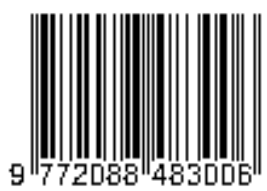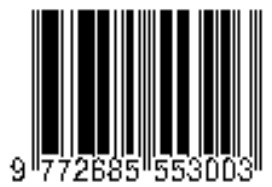PROFIL USAHA PENGOLAHAN KOPI LASINGAN DI KOTA MATARAM
Abstract
Abstract
Coffee is one of the plantation crops that plays an important role for the country's foreign exchange, because it is a leading export commodity sub-sector. Coffee drinks come from coffee beans that are processed in such a way through a long process starting from harvesting, post-harvesting, roasting to produce delicious coffee drinks. Lasingan coffee is one of the local brands that is quite famous on the island of Lombok. Lasingan coffee uses the original raw materials of the island of Lombok. Based on the background and problem formulation, the objectives of this study are: (1) To analyze the profile of the lasingan coffee business in Mataram City; (2) Analyzing the income of lasingan coffee business in Mataram City, (3) Analyzing the marketing of lasingan coffee in Mataram City. Determination of the research location purposively, which is chosen deliberately with certain considerations. The total production cost (TC) of lasingan coffee in 2021 is Rp. 86,471,760,- with details of Fixed Cost (FC) Rp. 11936,760, - and Variable Costs (VC) of Rp. 74. 535.000,-. The raw materials used in 2021 are 250 kilograms of coffee beans. The coffee beans used are robusta and arabica. The production of lasingan coffee is not carried out every day, but only twice a month, with the aim of producing cost efficiency. The number of workers in the local coffee business is 2 people. As for the processing of lasingan coffee with 2 methods, namely natural and natural anaerobic. In 2021, the revenue (TR) of the lasingan coffee business is Rp. 122,662,800,- with a Total Cost (TC) of Rp. 86,471,760, - so that the net income generated by the lasingan coffee processing business in 2021 is Rp. 36.191.040,-. The lasingan coffee does marketing both online and offline. Online marketing through social media, such as: facebook, market place, Whatsapp and Instagram, has been carried out in the middle of 2019 until now, while offline marketing is carried out by selling products in cafes, modern supermarkets and several specialty coffee outlets. 70% of lasingan coffee marketing is done online, so that during the Corona pandemic in early 2020, lasingan coffee sales did not experience a decline. The demand for lasingan coffee comes from within and outside the island of Lombok, there are even requests from abroad
References
[2] Dinas Perindustrian, 2016. Perkembangan Kopi. Dinas Perindustrian Provinsi Jawa Timur.
[3] Hall, James A. 2001. Sistem Informasi Akuntansi Edisi Pertama. Jakarta : Salemba Empat.
[4] Mulyadi. 2001. Sistem Akuntansi Edisi Tiga. Jakarta : Salemba Empat.
[5] Najiyati, S dan Danarti. 2006. Kopi Budidaya dan Penanganan Lepas Panen.Penebar Swadaya, Jakarta. 192 hlm.
[6] Panggabean E. 2011. Buku Pintar Kopi. Jakarta(ID): Agro MediaPustaka.
[7] Sang Ayu OW, dkk., Profil Usaha Pengolahan Kopi Bali Tugu Sari Pajahan di Desa Pajahan, Kecamatan Puputan Babupaten Tabanan. Jurnal Agribisnis dan Agrowisata ISSN: 3685-3809 Vol. 8 No.4 Oktober 2019
[8] Sudjana Nana dan Ibrahim. 1989. Penelitian dan Penilaian Pendidikan. Bandung: Sinar Baru Bandung.
[9] Sugiyono. 2005. Memahami Penelitian Kualitatif. Bandung: Alfabeta. 98
[10] Sugiyono. 2010. Metode Penelitian Kualitatif Kuantitatif R & D. Bandung: Alfabeta.
[11] Webster, Federick., 1999. Behavioral Customer In Marketing Relationship. 3th Edition. Princetown University Press.











